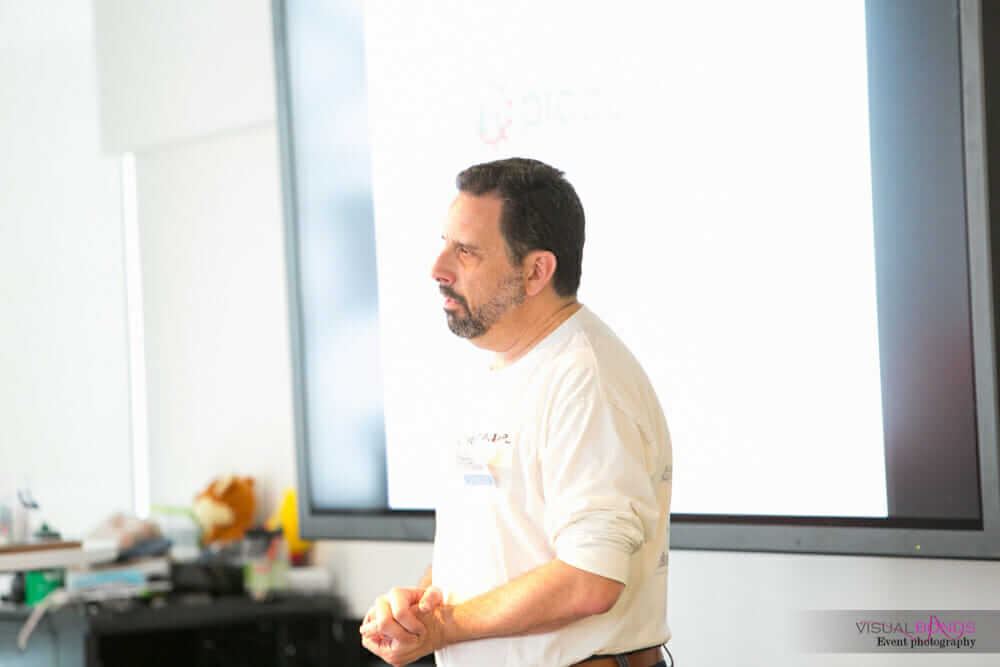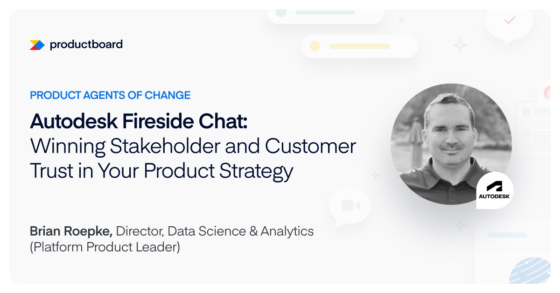Product Leadership Coaching (Soft Skills) with Rich Mironov

For this week’s webinar, we were delighted to be joined by Rich Mironov. During his 35-plus-year career, Rich has done it all as a product leader, executive, coach, consultant, programmer, developer – you name it. You may know him from his popular articles and books, including The Art of Product Management.
During the webinar, Rich and host Scott Baldwin discussed the subject of soft skills – what they are, how to build them, and the critical role they play in product management. In case you missed the live event, here’s an abridged version of the conversation.
Watch the full webinar on-demand
Welcome, Rich. Some people are confused about the whole concept of hard skills vs. soft skills. How would you define these two categories?
First of all, I might not have chosen those labels, but that’s what everybody uses. When I think about hard skills on the product management side, they tend to be skills that are transactional and easily measured. So, we write user stories, we pull data down to check usage, we do business cases. These things are more factual. They’re more data- and content-driven. In some sense, they are process recipes. You can’t be a product manager without doing that stuff.
Soft skills are all about the interpersonal stuff, the people skills. They’re a little more subjective and emotion-based. They tend to be very situation-specific or situation-dependent. It’s how we communicate with different kinds of people, how we manage stakeholders. It’s networking, leadership, and how we show ownership for our stuff. It’s how we generate emotional support and love among our developers so that they really care about our users and products.
Soft skills are all about the interpersonal stuff, the people skills. They’re a little more subjective and emotion-based. They tend to be very situation-specific or situation-dependent.
Those are all really important skills, but they’re hard to quantify. The higher people move up in an organization, the closer they get to the executive suite, the more critical those soft skills become. I’m able to delegate most of the transactional tasks back to the product management team.
You mentioned earlier that you might have chosen a different name than soft skills. Why is that?
The term soft skills is sort of pejorative, right? Sometimes we say EQ – you know, emotional quotient. But when we call them soft skills, it sounds like they’re optional or not important – and that’s entirely contrary to almost everything I’ve experienced and helped with over the last couple of decades.
“When we call them soft skills, it sounds like they’re optional or not important – and that’s entirely contrary to almost everything I’ve experienced and helped with over the last couple of decades.”
As far back as 1918, research funded by the Carnegie Institute of Technology found that 85% of job success was down to interpersonal skills. Why do you think we’re still struggling with this topic?
Everywhere I go in the world, I find that there are two tribes in almost every technology company. There’s the maker side – the developers, designers, and product managers – the folks who are heads down, putting stuff together. Then there’s the go-to-market side. And there’s a huge communications gap between those folks, with different styles of discussion and exposition, different ways of arguing.
For people who have come through the engineering side, particularly those who studied technology in school, the classes are all about getting to the right answer. Often, they’re solo projects or problem sets. Engineering and business schools are now emphasizing a lot more group work and collaboration, which is really important. But if I grew up thinking that the way to succeed is by getting the best answer in the class and having the teacher give me a gold star – none of that helps me understand how to work with the rest of the people in my company.
“If I grew up thinking that the way to succeed is by getting the best answer in the class and having the teacher give me a gold star – none of that helps me understand how to work with the rest of the people in my company.”
So some of it is down to education. But also, we all want to think of the world as full of people like us. The part of the world that loves Slack believes that everybody should be on Slack, and the part of the world that hates Slack and doesn’t want anything to do with it thinks those other folks are bizarre. And it’s not that one is better. It’s that we have to understand that we’re going to reach across the aisle a lot, and we’re going to work with people who are not like us.
Go back to Myers Briggs, or go back to Dale Carnegie’s famous book, How to Make Friends and Influence People. This problem isn’t new, but somehow it’s not strongly emphasized on the way up.

Yeah, I recently moved from a product-centric role to a consulting role, which has given me a completely different perspective on things like customer success, for example.
Yeah, it’s really important when you’re in the product seat, and you’re sitting down with somebody in customer success, to deeply understand how they’re motivated and what they care about.
Customer success folks, particularly in the enterprise world, are often attached to a couple of big accounts. They see the world through those big accounts – what they want must be the most important thing in the universe. And they don’t understand why people over on the product side keep asking how many more customers are going to use the feature other than just those three huge ones.
They don’t understand the sense of urgency. And when we put the product hat on, it’s vital that we respect and honor their viewpoint, even though, for the most part, we’re not going to give them what they want.
In the book Product Management in Practice by Matt LeMay, he notes that many PMs get hired based on hard skills that have little to do with the day-to-day work that they will be expected to perform. Why do you think this pattern exists?
I think the first things inexperienced PMs learn are those easily observable, easily quantifiable, transaction-style skills, like how to write a user story. I think we start at the bottom with those hard skills.
Also, HR always wants some checklist or rubric where they can say, “Oh, you can get promoted to the next level if you’re doing more than four customer interviews a month and all your tickets are in on time.” You know, something that’s observable.
Unfortunately, that’s not what turns a junior product manager into a senior product manager. Instead, it’s judgment, strategic insight, the ability to move along all the stakeholders. So I see the focus on hard skills as the default either for people who don’t really understand how product adds value or who need something to put on a scoresheet.
In the work you do with product leaders, how do you diagnose where they are on that spectrum or journey?
I spend a lot of time talking with the people I coach about the different functional groups and how they’re motivated, measured, and rewarded. We talk a lot about trying to find the generosity in our hearts for the people who aren’t aligned with how we want to do things.
So again, with customer success or sales teams, they want what they want. And my explanation for why they’re not going to get it doesn’t actually solve their problem. So there’s a lot of emphasis on negotiating skills. There’s a lot of game-playing and role-playing. It’s like, OK, for two minutes, pretend you’re my head of sales and act the way that your head of sales is acting.
“I find that the hard skills, the transactional skills, are what most of the product leaders get and understand. But how do we deal with unreasonable CEOs who have a new request to put in the queue every two to four hours? We role-play it a couple of times so that we don’t get angry, and we don’t act out. We think about what the right responses are.”
How can PMs shift their focus from hard skills and force themselves to spend more time and energy on soft skills?
Well, along the way, we don’t actually get to stop doing any of the other things. But I think that product managers should go out on the road and spend three days not speaking and just listening to how salespeople sell. On the one hand, you’ll get deep empathy. On the other hand, you may spot a whole bunch of things that you can do to help them sell better.
So when you observe those things and help in terms of positioning, fixing docs, or whatever, suddenly you have their attention and some of their goodwill. Whereas criticizing them for doing the wrong thing isn’t so successful.
I think it’s about going to different departments, shutting up, observing what they do, and pitching the roadmap in terms of value instead of deliverables. Nobody cares that we’re about to deliver version 6.35, code-named Scorpio. They care that we’re adding a bunch of new features that will let our customers integrate with some back-end finance systems that they’ve been screaming about.
So when we’re dealing with the go-to-market side, we need to start by talking about benefits, customers who care, target segments, and little vignettes that when salespeople repeat them word for word, people are going to sign purchase orders. We’ve got to go out there and walk, if not a mile, then at least a few yards in their shoes.
You’ve been in the product world for a long time. I’m curious about your transition through this. Was there a lightbulb moment when you went, “Oh, that’s what it’s all about!” in relation to these soft skills?
Sure. I graduated with an MBA a long time ago, and I lasted about a year and a half in my first job, as did almost all of my MBA classmates, because we had this huge chip on our shoulders.
We’d spent two years reading cases that all started with the phrase, “You are the CEO of…” So when I went to my first job, which happened to be at a commercial bank, I came in swaggering. But I knew nothing. And people who’d been in the banking business for 20 years had to give me a talking to about reinstalling some humility.
I didn’t stay there very long, but I was as impolite and offensive as anybody who comes out of business school. It took me a little while to relearn. It wasn’t until my third or fourth time as a Director of Product where it finally became clear that it wasn’t my job to convince everyone that they cared about product management, and that being the person who said no all day long wasn’t making me any friends.
Do you have any similar examples where people you have worked with have shifted in their approach to product management?
One thing I run into a lot is what Melissa Perri calls feature factories in her book, Escaping the Build Trap. I see a lot of the go-to-market side delivering demands in the form of mediocre-to-poor technical requirements that don’t work, don’t support the product, and aren’t strategic, but which somebody asked for. And the product side is told that they’re in charge of making engineering more productive, instead of building the right things.
That’s a vicious cycle where there’s no trust. So what I usually start with is a little analysis with the Head of Product where we look back a quarter or two and see what we actually spent our engineering hours on.
Perhaps we had an idea that we were spending a third of our energy on bug fixes, a third on features, and a third on scalability and infrastructure. But when we look at it, we find out that 20%, 30%, or even 50% of the work was on individual special requests for deals that didn’t close. That’s important because instead of going back to the other side of the house and saying, “You guys are dumb,” we bring back the list of interrupts.
So we can say, “Here are the names of the 18 most recent interrupts that weren’t in our roadmap for the quarter, and for which somebody applied enough political leverage to displace something that we had promised.”
That sets us up to have a grown-up trade-off discussion. We can say, “OK, we can do that next thing you’ve asked for. But here are the features we’re going to have to throw out this quarter as a result.” Instead of being the folks who always say no, we are the folks who bring hard choices forward.

This reminds me of a quote from George Bernard Shaw: “The single biggest problem in communication is the illusion that it’s taken place.”
That’s right. And the idea that I, as the head of product, am going to convince everybody else in the company to behave differently than they’re used to – it’s just backward.
On the product side, we have to figure out how to communicate in ways that people can hear, appreciate, and understand. Otherwise, we’re wasting our time and energy. It isn’t useful to complain about how sales or marketing aren’t getting it.
“On the product side, we have to figure out how to communicate in ways that people can hear, appreciate, and understand. Otherwise, we’re wasting our time and energy. It isn’t useful to complain about how sales or marketing aren’t getting it.”
How do you think soft skills evolve as we move from being individual contributor product managers to sitting in that product leader seat?
I think they are always there, and good individual contributor PMs have a lot of them already. But again, I think individual contributor PMs are mostly judged on the success of their product and their ability to get through transactional work with their development teams.
As you move up into the product leadership roles, you’re doing less and less of the actual strategy, product management, pricing and packaging, and customer interviews. You’re now the exponent, the representative, the champion for product managers doing their jobs and succeeding. The Head of Product has to spend a lot of time showing the rest of the company that product, engineering, and design are successful – that they are heroes.
Our entire role as product managers is to be catalysts for alignment and collaboration. Where do you see us falling down here?
I think when somebody interrupts you and tells you they need something, one of the places we fall down is that we leap right into telling them why they can’t have what they want, without first having a moment to appreciate and thank them for taking time out of their day to come bother us.
If we become the ogres, if we become the people that nobody wants to talk to, they’ll find some other way around us and go directly to our development teams. So we have to appreciate the requestor even if we’re not going to approve the request.
In a lot of the sessions I run, I talk about treating feedback as a gift. Would you agree with that?
That’s right, even if you don’t want it. Even if we know that there are 847 other things in the product backlog that are never going to see the light of day, and we’re going to file this one in position 360, and it’s never going to pop up. Sometimes there’s a pattern that we can learn from, and even if we can’t, we owe them the respect to do that.
I have many concerns and trepidations about the feedback I get from enterprise sales teams because I know it’s heavily slanted. But I have to remind myself that there are often important things in there.
Yes, it’s true that every sales rep tells me that good salesmanship is the reason we won a deal and that the fact we’re missing 50 or 100 features is the reason we lost a deal. But there’s still some goodness in there. And I have to hold myself in check and not chew them out. Because you know what? I might learn something.
Candor is a key ingredient in communicating effectively and working in teams. How can product leaders bring this skill to bear in their work? And should they approach this differently when speaking to a co-founder vs. someone lower down the ranks?
The challenge with the co-founder CEO is that they can fire you. So it’s hard to convince them that they’re not an expert in the customer base and that they’re getting very biased information because they’re only on sales calls with big customers.
It’s tough to convince the person who founded the company that they have to give up, that they have to delegate a lot of decision-making to other people. I don’t always get it right, but you have to figure out how they individually think and what their basis is.
If you look further down in the organization, I see a lot of folks who either lack the skills or lack good input. I think I’m a little less candid than I might be, and that’s OK because I want to encourage everyone that I think is a keeper for the company. I want to give them a hint. I want to point them toward a blog post. I want to walk them through the exercise a couple of times.
In the book Product Leadership, the authors mention that experienced product people with strong soft skills are in short supply. What tips do you have for PMs who want to develop or grow into these opportunities?
First, if you’re an individual contributor PM and want to move up the stack, I would go to your current manager and say something like, “I’m interested in moving up. I’d like a job like yours someday. I’m not gunning for your job. I’m not trying to gaslight you or kick you out. What I’d really like is some input, some help on areas that I might need to work on. Can you give me a punch list?”
The other part is to look for opportunities to do the things that product leaders do that are different from what product managers do. Volunteer to be on a cross-functional task force. Spend some time with the sales team or the field team. Work on an announcement of your new product with marketing instead of throwing them a bunch of docs. If your support team has a second headset technology, spend a couple of hours listening in on calls to understand what they are going through.
Look for opportunities to do the things that product leaders do that are different from what product managers do.
If I’m the manager here, I might encourage my direct report to go to a bunch of staff meetings and present the group’s roadmap and see how that feels. It’s all about getting ourselves out of the transactional work and forcing some experience of what directors and product leaders do.
Then you can ask yourself, “Well, did that make me happier or not?” The increase in salary might, the more stock options might, but if you’re going to come into the office and feel miserable, maybe that’s not the job you really want.
What three things could a product manager do tomorrow to improve their soft skills?
There are a lot of great books about coaching, mentoring, scrum mastering, and things that come out of the agile movement that aren’t specific to product management. They don’t mention product management anywhere, but they’re about how to get things done. So I might read up on them.
It’s certainly worth reading about the Myers Briggs view of life if you haven’t already. It’s a bit pseudoscience, but it can help open your eyes to people who are not like you.
What else? There’s a woman named Karen Katlin, who has a site called Better Allies. It’s all about how to be a little more inclusive in the way we hire, in the way we treat people, and in the way we promote people. I found it eye-opening in terms of the things I might be doing that are off-putting to others but that I perhaps don’t notice.
To add a fourth, for anybody who comes to my site, there are probably 40 or 50 posts under the leadership tag, and many of them are on this topic.
Watch the full webinar on-demand





